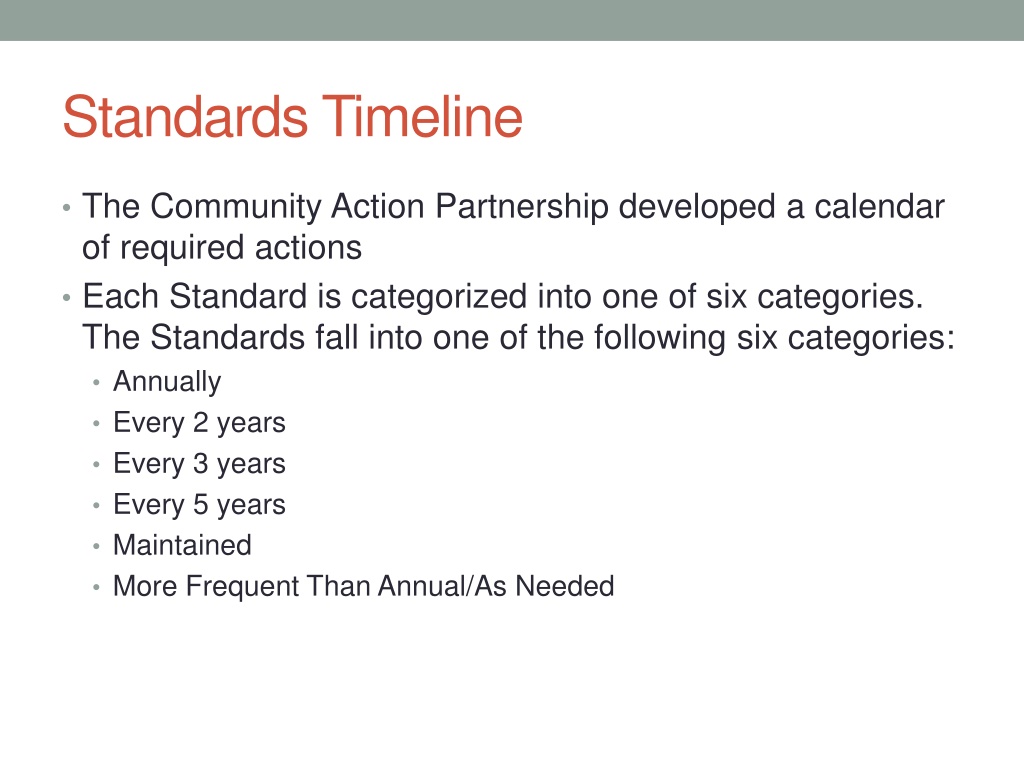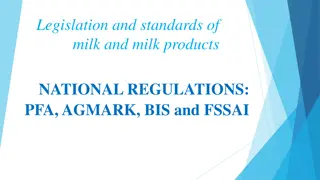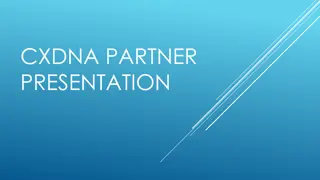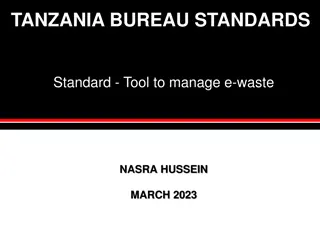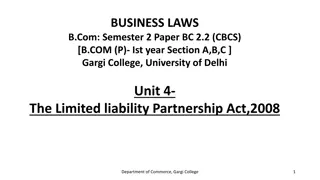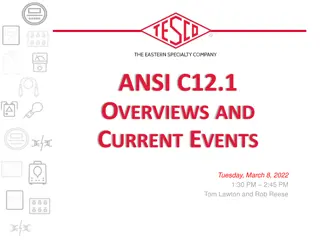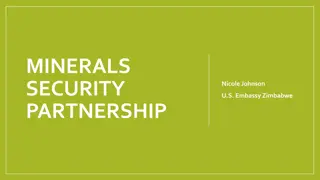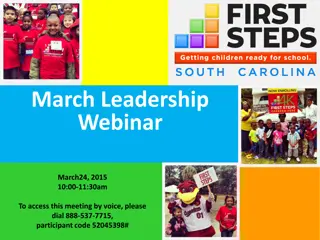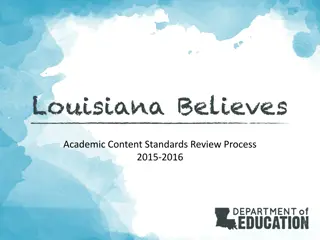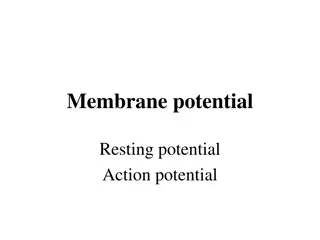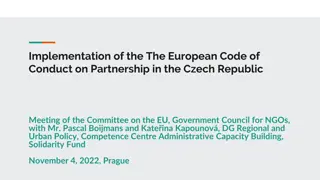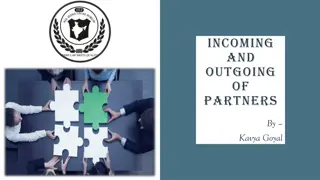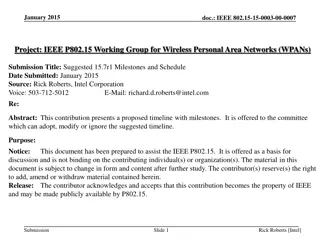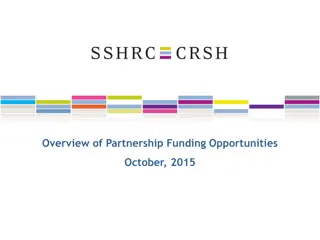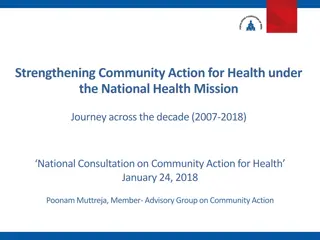Community Action Partnership Standards Timeline
The Community Action Partnership has developed a calendar of required actions categorized into six different timelines for standards. These actions include annual reviews, governing board updates, CEO performance appraisals, audits, budget approvals, and more. The standards fall under categories such as annually, every 2 years, every 3 years, every 5 years, maintained more frequently than annual, and as needed. The organization must adhere to these timelines and present reports to the governing board for review and acceptance.
Download Presentation

Please find below an Image/Link to download the presentation.
The content on the website is provided AS IS for your information and personal use only. It may not be sold, licensed, or shared on other websites without obtaining consent from the author. Download presentation by click this link. If you encounter any issues during the download, it is possible that the publisher has removed the file from their server.
E N D
Presentation Transcript
Standards Timeline The Community Action Partnership developed a calendar of required actions Each Standard is categorized into one of six categories. The Standards fall into one of the following six categories: Annually Every 2 years Every 3 years Every 5 years Maintained More Frequent Than Annual/As Needed
Annual Review - November 15th 4.4 The governing board receives an annual update on the success of specific strategies included in the Community Action plan. 6.5 The governing board has received an update(s) on progress meeting the goals of the strategic plan within the past 12 months. 7.4 The governing board conducts a performance appraisal of the CEO/executive director within each calendar year. 7.5 The governing board reviews and approves CEO/executive director compensation within every calendar year. 8.1 The Organization s annual audit (or audited financial statements) is completed by a Certified Public Accountant on time in accordance with Title 2 of the Code of Federal Regulations, Uniform Administration Requirements, Cost Principles, and Audit Requirement (if applicable) and/or State audit threshold requirements. 8.2 All findings from the prior year s annual audit have been assessed by the organization and addressed where the governing board has deemed it appropriate.
Annual Review Continued 8.3 The organization s auditor presents the audit to the governing board. 8.4 The governing board formally receives and accepts the audit. 8.6 The IRS Form 990 is completed annually and made available to the governing board for review. 8.9 The governing board annually approves an organization-wide budget. 9.3 The organization has presented to the governing board for review or action, at least within the past 12 months, an analysis of the agency s outcomes and any operational or strategic program adjustments and improvements identified as necessary. 9.4 The organization submits its annual CSBG Information Survey data report and it reflects client demographics and organization-wide outcomes.
Every 2 years, 3 years, 5 years Timeframe is usually clear in the standard These standards will be tracked by your program representative. A new tab will be added to the Training/TA plan Will look similar to: Frequency Standard Most recent Version To be updated by: 2-years 4.6 9/1/2016 9/1/2018
Every 2 years 4.6 An organization-wide, comprehensive risk assessment has been completed within the past 2 years and reported to the governing board. 5.4 The organization documents that each governing board member has received a copy of the bylaws within the past 2 years. 5.6 Each governing board member has signed a conflict of interest policy within the past 2 years. 5.8 Governing board members have been provided with training on their duties and responsibilities within the past 2 years. 8.10 The fiscal policies have been reviewed by staff within the past 2 years, updated as necessary, with changes approved by the governing board.
Every 3 years 1.2 The organization analyzes information collected directly from low- income individuals as part of the community assessment. 2.2 The organization utilizes information gathered from key sectors of the community in assessing needs and resources, during the community assessment process or other times. These sectors would include at minimum: community-based organizations, faith-based organizations, private sector, public sector, and educational institutions. 3.1 The organization conducted a community assessment and issued a report within the past 3 years. 3.2 As part of the community assessment, the organization collects and includes current data specific to poverty and its prevalence related to gender, age, and race/ethnicity for their service area(s). 3.3 The organization collects and analyzes both qualitative and quantitative data on its geographic service area(s) in the community assessment. 3.4 The community assessment includes key findings on the causes and conditions of poverty and the needs of the communities assessed. 3.5 The governing board formally accepts the completed community assessment.
Every 5 years 4.1 The governing board has reviewed the organization s mission statement within the past 5 years and assured that: 1. The mission addresses poverty; and 2. The organization s programs and services are in alignment with the mission. 5.3 The organization s bylaws have been reviewed by an attorney within the past 5 years. 6.1 The organization has an agency-wide strategic plan in place that has been approved by the governing board within the past 5 years. 6.2 The approved strategic plan addresses reduction of poverty, revitalization of low-income communities, and/or empowerment of people with low incomes to become more self-sufficient. 6.3 The approved strategic plan contains family, agency, and/or community goals. 6.4 Customer satisfaction data and customer input, collected as part of the community assessment, is included in the strategic planning process. 7.1 The organization has written personnel policies that have been reviewed by an attorney and approved by the governing board within the past 5 years. 7.3 The organization has written job descriptions for all positions, which have been updated within the past 5 years. 8.5 The organization has solicited bids for its audit within the past 5 years. 8.11 A written procurement policy is in place and has been reviewed by the governing board within the past 5 years.
Standards in the As Needed category No further expectation to upload documentation unless you have something new to share. These standards will be reviewed and discussed during monitoring visits and monthly calls.
As Needed 5.5 The organization s governing board meets in accordance with the frequency and quorum requirements and fills board vacancies as set out in its bylaws. 5.7 The organization has a process to provide a structured orientation for governing board members within 6 months of being seated. 5.9 The organization s governing board receives programmatic reports at each regular board meeting. 7.2 The organization makes available the employee handbook (or personnel policies in cases without a handbook) to all staff and notifies staff of any changes. 7.8 All staff participate in a new employee orientation within 60 days of hire. 7.9 The organization conducts or makes available staff development/training (including ROMA) on an ongoing basis. 8.7 The governing board receives financial reports at each regular meeting that include the following: 1. Organization-wide report on revenue and expenditures that compares budget to actual, categorized by program; and 2. Balance sheet/statement of financial position. 8.8 All required filings and payments related to payroll withholdings are completed on time.
Standards in the Maintain Category Majority of these standards are met once and do not need to be updated unless there are changes. Some do require that once an action is completed the new information needs to be uploaded.
Maintain 1.1 The organization demonstrates low-income individuals participation in its activities. (reviewed in board minutes, needs assessment community meetings, etc.) 1.3 The organization has a systematic approach for collecting, analyzing, and reporting customer satisfaction data to the governing board. 2.1 The organization has documented or demonstrated partnerships across the community, for specifically identified purposes; partnerships include other anti-poverty organizations in the area. (submitted with the community action plan ) 2.3 The organization communicates its activities and its results to the community. 2.4 The organization documents the number of volunteers and hours mobilized in support of its activities. (we see this in reporting) 4.2 The organization s Community Action plan is outcome-based, anti-poverty focused, and ties directly to the community assessment. 4.3 The organization s Community Action plan and strategic plan document the continuous use of the full Results Oriented Management and Accountability (ROMA) cycle or comparable system (assessment, planning, implementation, achievement of results, and evaluation). In addition, the organization documents having used the services of a ROMA-certified trainer (or equivalent) to assist in implementation.
Maintain Continued 4.5 The organization has a written succession plan in place for the CEO/ED, approved by the governing board, which contains procedures for covering an emergency/unplanned, short-term absence of 3 months or less, as well as outlines the process for filling a permanent vacancy. 5.1 The organization s governing board is structured in compliance with the CSBG Act: 1. At least one third democratically-selected representatives of the low-income community; 2. One-third local elected officials (or their representatives); and 3. The remaining membership from major groups and interests in the community. 5.2 The organization s governing board has written procedures that document a democratic selection process for low-income board members adequate to assure that they are representative of the low-income community. 7.6 The organization has a policy in place for regular written evaluation of employees by their supervisors. 7.7 The organization has a whistleblower policy that has been approved by the governing board. 8.12 The organization documents how it allocates shared costs through an indirect cost rate or through a written cost allocation plan. 8.13 The organization has a written policy in place for record retention and destruction. 9.1 The organization has a system or systems in place to track and report client demographics and services customers receive. 9.2 The organization has a system or systems in place to track family, agency, and/or community outcomes.
